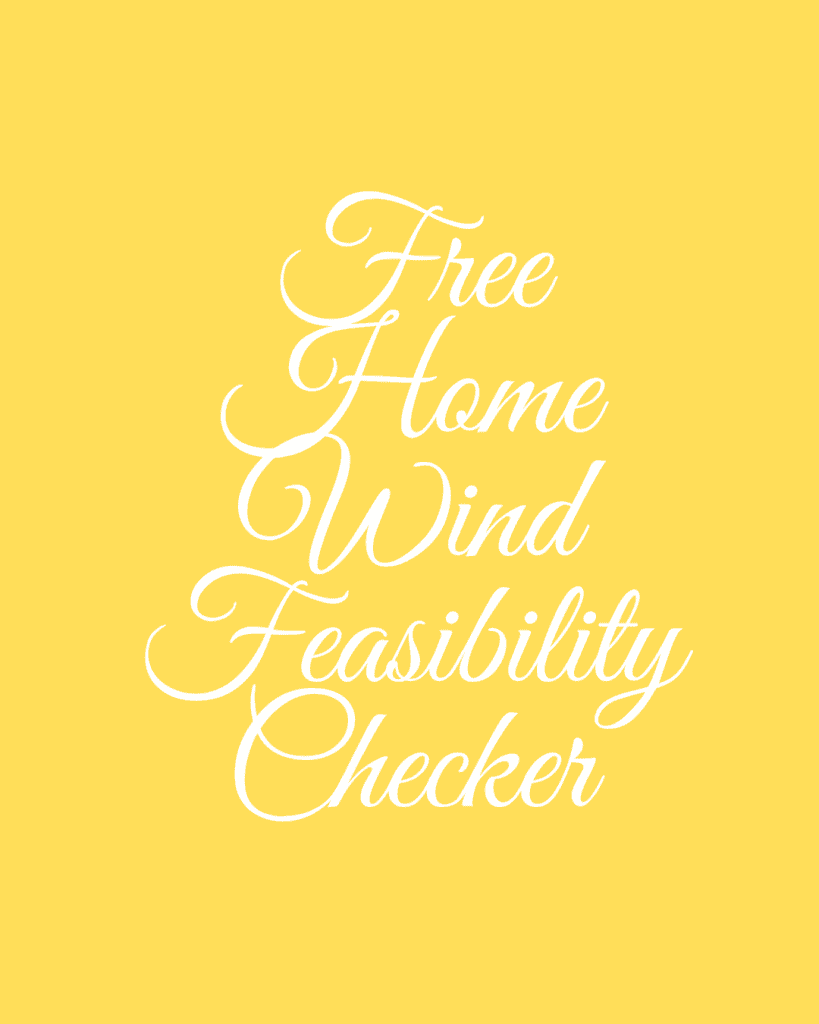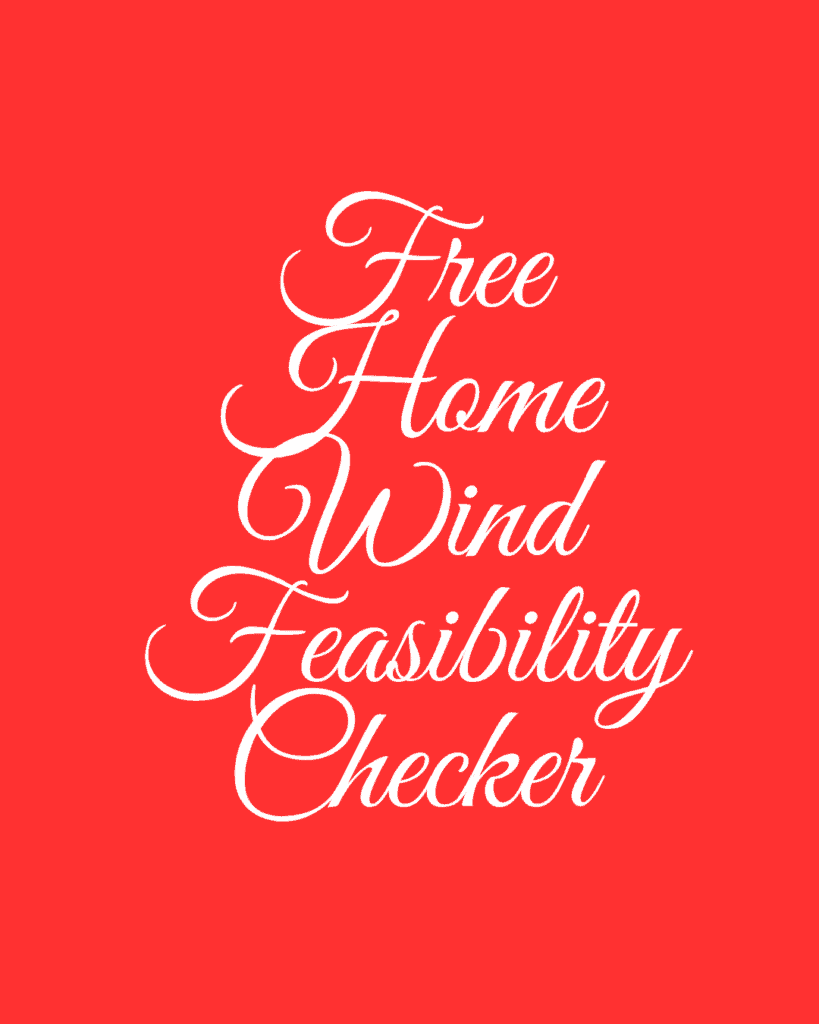Home Wind Feasibility Checker
Free Home Wind Feasibility Checker
What is a Home Wind Turbine?
Home wind turbines are small versions of the massive wind farms you see throughout the countryside that generate clean energy on an industrial scale, used for powering homes and providing alternative sources of energy while simultaneously lowering electricity bills. These smaller systems provide powering capabilities while providing an additional source of alternative power sources that can lower bills significantly.

Residential wind power is one of the most cost-effective home energy solutions. An average home can utilize wind to lower electric costs by 50-90%, provide uninterrupted power during utility outages, and decrease carbon emissions.
Wind turbines harness the kinetic energy of wind to convert it to electricity via rotational energy conversion. As wind blows over their blades, it causes them to spin; this rotational energy is transformed into electricity by a generator inside their nacelle (a protective housing which prevents wind from touching them) before being distributed through wires down their tower and into your home or back into the grid (in grid-tied systems).
An effective residential wind power system typically features an inverter to convert AC output from a turbine into DC voltage suitable for residential use, which connects to a battery bank for storage. Installation should not be attempted without professional assistance and it’s best suited to professional services only; initial investments for small wind systems can be substantial so it is vital to understand your power requirements before selecting an appropriate system size.
Small wind turbines are often installed atop towers in order to access stronger winds. Some models, however, can even be mounted more directly to the ground.
Domestic wind turbines typically range in size from 400 watts to 20 kilowatts, depending on how much power you wish to generate at your property and whether or not it will feed into the grid (off-grid systems).
Wind Speed and Direction
Home wind turbines require an average wind speed above 13mph for optimal operation, so professional evaluation is advised when considering whether your property can support wind power. Variables to consider include energy requirements, available area, local regulations and visual influence as well as visual aesthetics. Furthermore, an accurate weather station should be set up so as to measure wind speeds over an extended period or year – including measurements on wind speed and direction with great precision.
These data will be used to calculate the average wind speed, maximum wind speed, frequency of low-speed intervals and micro-siting characteristics for evaluation of trees or buildings that might affect wind data collection.
These measurements will produce a graphic known as a “speed rose” or frequency rose, in which each petal represents the frequency and amount of energy generated from each direction of wind during measurement time. A consultant will use this data to recommend appropriate technology and wind turbine size recommendations that match up with your annual electricity requirements.
Energy Requirements
Home wind turbines produce substantial quantities of electricity that can help offset much of your home’s energy needs. To determine what capacity would best suit your house, you will need to evaluate your electricity usage and wind speed in your region; then consider any zoning laws, power company policies or covenants related to where your turbine will be situated as well as long-term investment and financial commitments associated with setting one up.

Home wind energy systems typically consist of three basic components: rotor, generator and tower as well as “balance of system” components like controllers, inverters and batteries. A rotor captures wind kinetic energy to drive its generator, producing AC or DC electricity which can then be converted to grid-compatible AC electricity that can either be stored in batteries or fed into your home electrical system.

Rural and coastal locations tend to offer the best conditions for home wind turbines, with consistent and high-energy winds in these regions. Conversely, urban and suburban locations usually do not meet this criteria due to reduced winds speeds caused by buildings or other obstacles, limiting home wind turbine usage.
